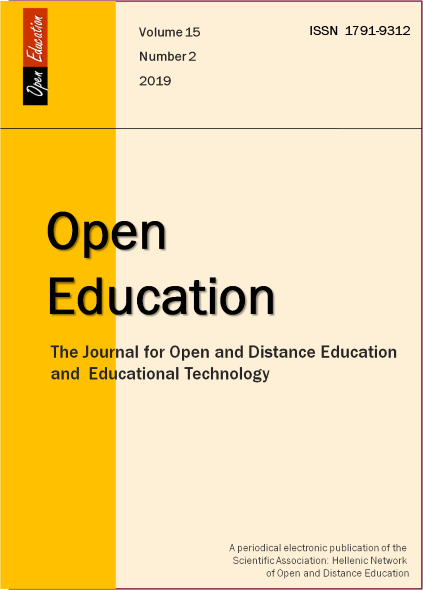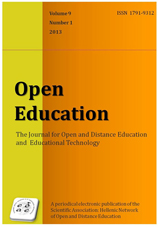«Η χρήση της επαυξημένης πραγματικότητας στην εκπαίδευση: Ανάπτυξη και χρήση εφαρμογής για το μάθημα «Φυσικά - Ερευνώ και Ανακαλύπτω» της Ε΄ τάξης του Δημοτικού σχολείου»--The use of augmented reality in education: development and use of application for the course "Physics - Explore and discover" in the 5th class of the primary school
Résumé
Με την παρούσα ερευνητική εργασία, αρχικά, επιχειρείται μία σύντομη βιβλιογραφική επισκόπηση της έννοιας της επαυξημένης πραγματικότητας, των εφαρμογών αυτής και των αντίστοιχων αποτελεσμάτων στο χώρο της εκπαίδευσης, αφού η επαύξηση του πραγματικού περιβάλλοντος με την ψηφιακή πληροφορία θεωρείται ότι προσφέρει επιπλέον δυνατότητες στη διδασκαλία και τη μάθηση. Στη συνέχεια σχεδιάζεται, αναπτύσσεται και εφαρμόζεται στην Ε΄ τάξη του Δημοτικού Σχολείου, μία πρωτότυπη εκπαιδευτική εφαρμογή επαυξημένης πραγματικότητας (AR) σε σχολικό βιβλίο, στην ενότητα «Υλικά Σώματα», του γνωστικού αντικειμένου «Φυσικά - Ερευνώ και Ανακαλύπτω», προκειμένου να διερευνηθεί η επίδραση των σχολικών βιβλίων Φυσικής AR, αφενός, στα μαθησιακά αποτελέσματα και αφετέρου, στο ενδιαφέρον και τη στάση των μαθητών/-ριών για το συγκεκριμένο μάθημα. Τα αποτελέσματα αυτής της εφαρμογής καταδεικνύουν θετική επίδραση όσον αφορά τα μαθησιακά αποτελέσματα και ενίσχυση του ενδιαφέροντος και της θετικής στάσης των μαθητών/-ριών, αρχικά, για το μάθημα της Φυσικής και επιπλέον, έκφραση επιθυμίας για επέκταση αυτού του είδους εφαρμογών και στα υπόλοιπα γνωστικά αντικείμενα.
--
This research paper initially attempts to give a brief bibliographic overview of the concept of augmented reality, its applications and corresponding outcomes in the field of education, since enhancing the real-world environment with digital information is considered to offer additional opportunities for teaching and learning. Subsequently, it is designed, developed and implemented in the 5th class of Primary School, an original Augmented Reality (AR) educational textbook application in the "Physics" section of the "Physics - Explore and discover" course to explore the effect of Physics AR textbooks on learning outcomes and on students' interest and attitudes about the subject. The results of this application show a positive impact on learning outcomes and reinforce students' interest and positive attitude towards the Physics lesson, a desire derived towards the extension this type of application to other knowledge objects.
Article Details
- Comment citer
-
- Numéro
- Vol. 15 No 2 (2019)
- Rubrique
- Μέρος πρώτο / Section 1






